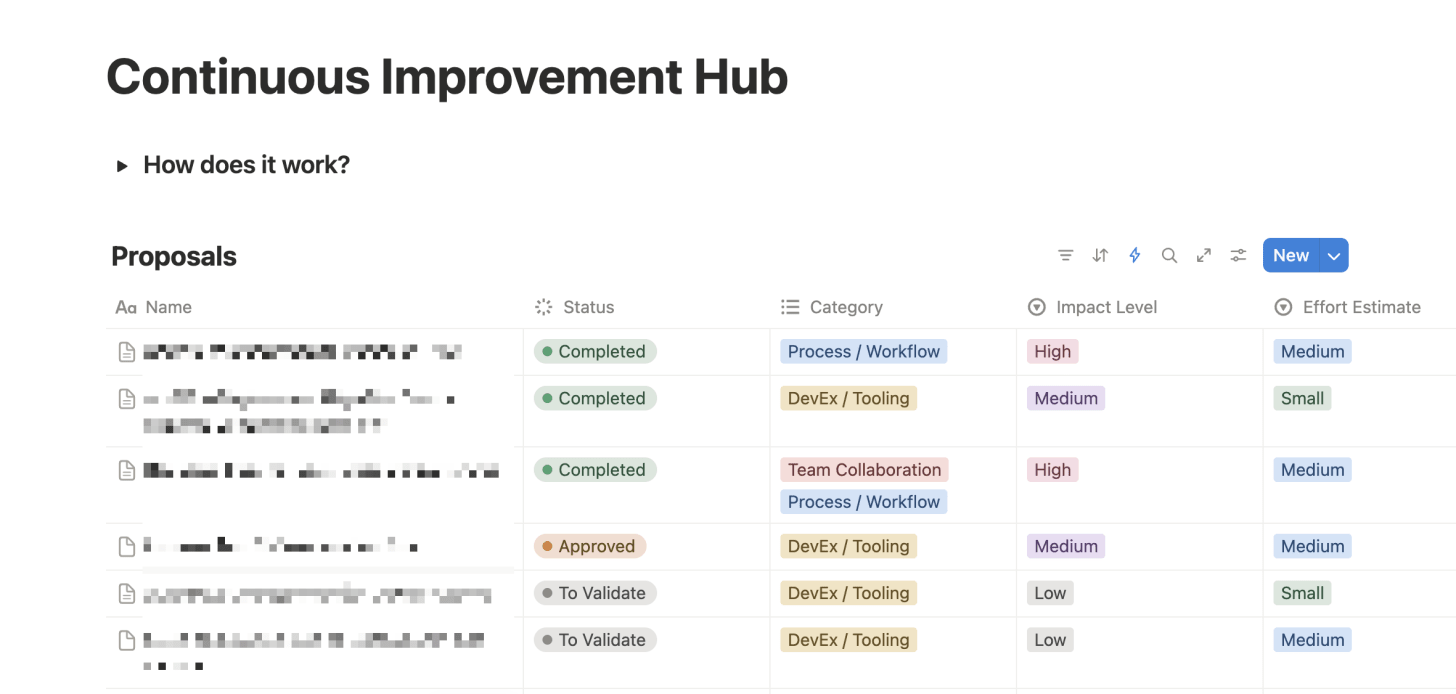The arrival of new team members is always a breath of fresh air: a boost of energy, enthusiasm, and a strong desire to make a difference. Usually, right after someone joins, new ideas start coming in: improving a process, cleaning up part of the codebase, simplifying a workflow. This enthusiasm is great and inspires the whole team, but sometimes it can also be a double-edged sword.
I often found myself giving answers like:
«It’s not a priority»
“We can’t, budget-wise»
«We’ve already tried that»
«Maybe later».
Sometimes I’d even get a bit annoyed by all that enthusiasm, underestimating the value and impact it could have. Looking back, though, the result was always the same: after a few weeks, that initial spark would fade away.
All of this happened because the message I sent was clear and unmistakable: there’s no point in speaking up, no one’s going to listen anyway.
It took me a while to understand where the real mistake was, and over time I realized that no, the problem wasn’t saying no to the ideas. Maybe you can already figure out what it was.
One thing I learned is that proactivity is not all the same. There are at least two different types of proactivity:
On one hand, there’s naive proactivity: the kind that comes from the enthusiasm of newcomers or those looking in from the outside. The ideas are often raw, sometimes unrealistic, but they’re valuable because they bring fresh perspectives.
On the other hand, there’s informed proactivity: the kind that comes from hands-on experience, from people who face problems daily and look to improve processes, tools, or habits. This is often where small changes can have a big impact.
The problem is that if you handle both the same way: with a “not now” or silence the outcome is the same: people learn that sharing ideas doesn’t matter.
A “no” doesn’t kill proactivity.
But a cold, superficial, or hanging-in-the-air “no”… that does.
That’s the mistake it took me a while to understand. Sometimes proposals don’t take into account the context, the budget, or what information people are exposed to. Every “no” carries its own value and meaning, and realizing this, and learning to deliver it with reasons and small adjustments, made all the difference.
There’s a huge difference between saying:
❌ «No, we can’t»
and saying:
✅ «Not right now, and here’s why. This part makes sense, though we can revisit it once X is resolved / if Y changes».
Even a naive idea can become a growth opportunity if a “no” comes with context, feedback, and openness. And likewise, even a great idea can kill enthusiasm if it’s ignored.
Saying “no” the right way means treating proactivity as a signal to nurture, not a nuisance to dismiss.
Rejecting a naive idea is one thing. Ignoring or dismissing a good idea causes deeper harm. Usually, the person proposing it isn’t just enthusiastic, they genuinely care. They’ve seen a real problem and want to fix it.
It happened to my proposals plenty of time (and I probably rejected good proposals in the past without even noticing) and that was exactly what made me realize that killing proactivity, especially when informed, is the same as killing the care the person puts into their work. It happened to me so why shouldn’t this apply to my reports too?
As I already mentioned, the first step is to truly listen: distinguish between raw ideas and proposals with real potential. Give clear feedback, explain the constraints, and point out what works and what doesn’t.
Next, it’s important to track proposals. When ideas disappear into a black hole, people stop believing it’s worth sharing them. That’s why I created, as an outcome of one of the team retrospectives, a Continuous Improvement Hub: a single space where we collect all initiatives, with status, priority, and comments visible to everyone. Not everything gets tackled immediately, but nothing vanishes. Even just knowing that your idea has been heard and can be revisited completely changes how it’s perceived.
Finally, you should allow room for micro-experiments. Not everything needs to go through a formal roadmap: letting teams test small, low-risk improvements creates fertile ground for bigger innovations.
Teams stop proposing ideas because because they realize nothing ever changes. A leader’s job isn’t just to welcome enthusiasm, but to channel it: guide when needed, recognize it when it matters, and above all, never let it die in silence.
You, as a leader, don’t have to say yes to everything. But every no can either kill or nurture: it all depends on how you say it.
Credits: Illustration 1
.png)






